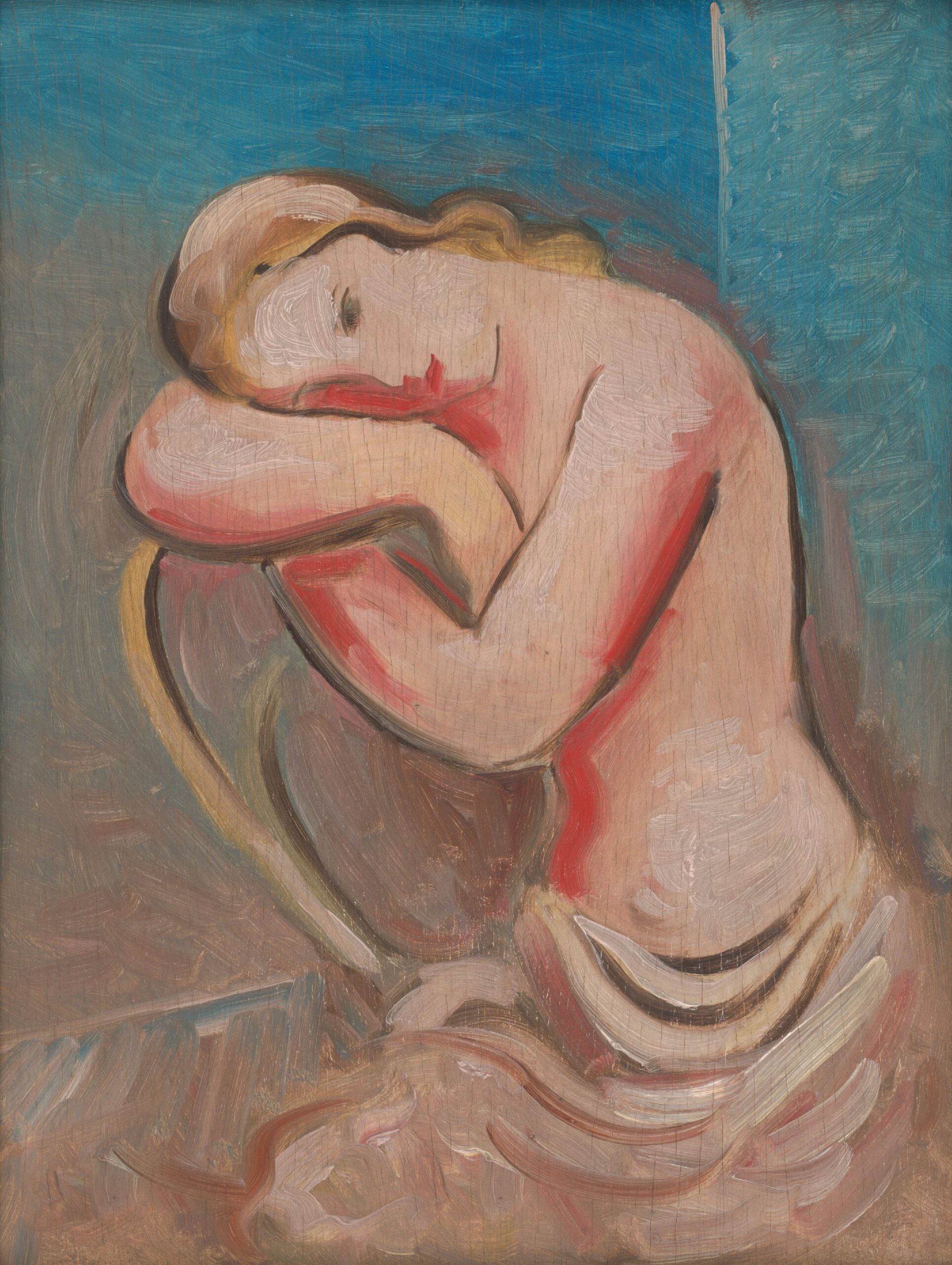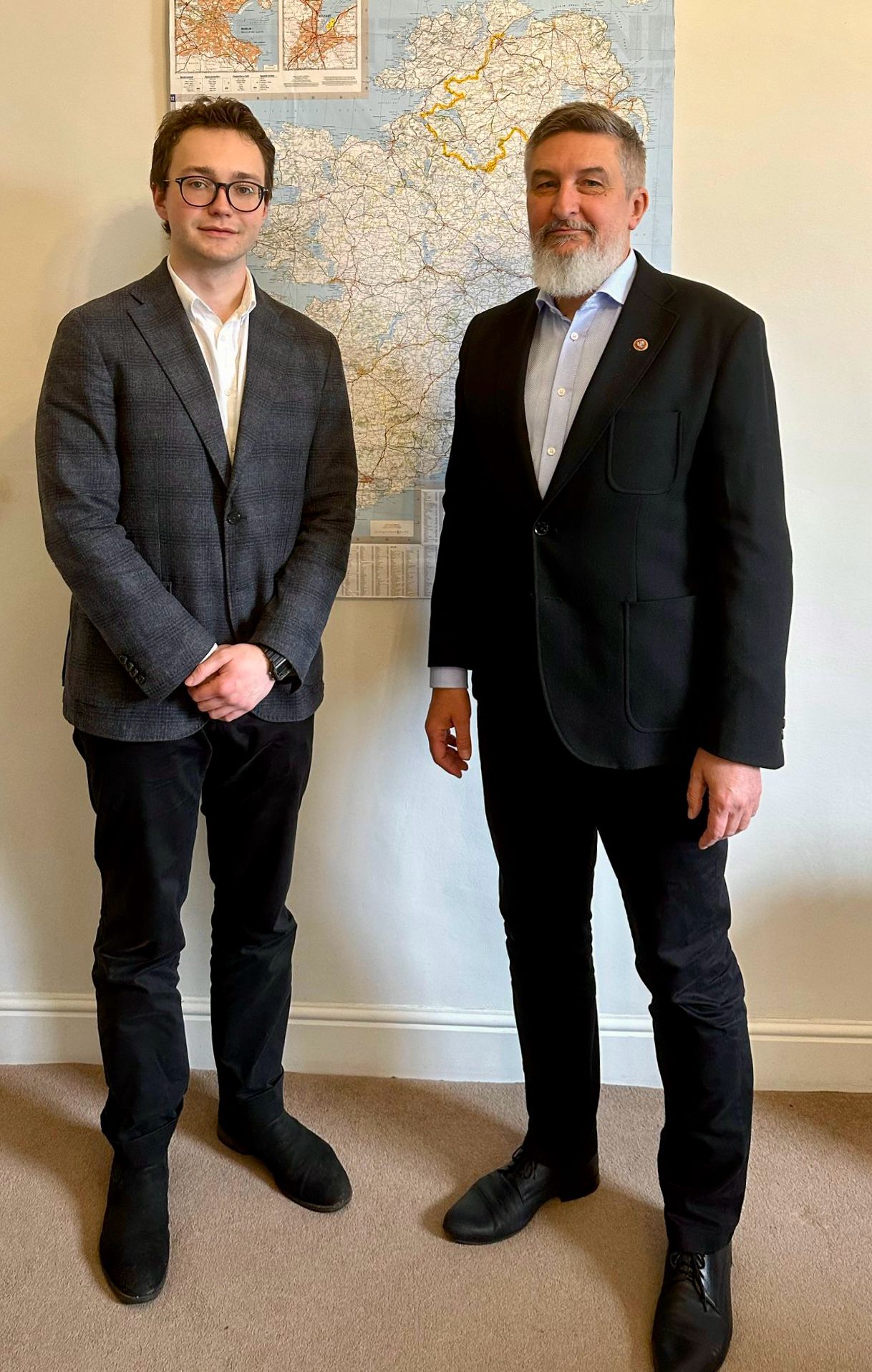Lingerie-clad women donning fluffy boas and invading opticians may not be typically characteristic of a public feminist demonstration, but that is exactly what Spanish artist Yolanda Domínguez orchestrated a few months ago in the country’s capital, Madrid. I arranged to meet Domínguez in the quirky Le Coco coffee shop in the heart of the Chueca district, the epicentre of the Madrilenian LGBT movement. The spellbinding atmosphere of excitement that pervades the barrio at night, when the shop lights dim and the neon bar signs flicker to life, is not dispelled by the blistering July sun that beats down on the cobbled streets. Chueca is awash with pride colours, from bunting strung across its narrow streets to shop fronts boasting gigantic rainbow cakes. Le Coco is situated down one of the barrio’s side streets.
Domínguez sits across the scrubbed wooden bench from me, ordering her coffee with a glass of ice, a popular habit of Spaniards at the summer’s peak. We make small talk in Spanglish. Although we both speak English and Spanish, here in the heart of Spain I have far greater confidence in Domínguez’s careful yet confident English, than I do in my own spoken Spanish, my pronunciation of which seems to be a source of amusement to our attending waiter. Like most modern-day feminists, Domínguez does not feel the need to physically identify herself as such, and is dressed simply, sans sloganised t-shirts or symbolic badges. She immediately identifies herself as an opinionated person, someone knowledgeable on current affairs and with a readiness to make her voice heard either through words or art: “I’m not that kind of artist that goes to the mountain to be alone”, she says. “I’m not interested in being alone. I’m always watching TV, magazines and social networks.”
When the Spanish optical company Multiópticas released an advert featuring a lone man entering a dim bar populated by scantily clad women, they were apparently unaware of the seemingly obvious suggestions they were making. The Spanish voiceover states that the man can “have that incredible first time feeling anytime you want”. The corresponding images suggest that he has the same choice in females and glasses, reducing women to the same level as the product the company sells. The general consensus among viewers was that women were being presented as little more than accessories that could be used and discarded at will, just like the glasses.
“I am not a genius who has an idea … I’m like an intermediary, I take what people say or what they are worried about and I launch a proposal”
The advert caused outrage and inspired Domínguez’s artistic movement titled “Accessible and Accessory”, which sought to emphasise the company’s objectification of women by turning them into mere accessories in life, rather than active participants. Despite having cast women in such outfits in the widely broadcast advertisement, the company was less than pleased to find a band of similarly clad models on their own doorstep. In fact, so similar were the outfits, that many store managers welcomed the women in, thinking they were promoters sent by head office. Photos of the demonstration were widely circulated around Spain by the media, and after a landslide of complaints to the advertising authority, the advert was removed. Despite the widespread coverage, Domínguez simply states: “I am not a genius who has an idea … I’m like an intermediary, I take what people say or what they are worried about and I launch a proposal.” Although this particular action sparked national interest in her work, this was not Domínguez’s first venture into the expansive void between female media representation and female reality.
Although Domínguez first embarked on her artistic career as a painter, she quickly became disenchanted with the industry having learnt that consumers simply “bought [her] pictures to decorate the wall”. Determined to stir something deeper in her audience, Domínguez began to study photography. While taking part in a project on the street she found the personal public engagement that was so missing from her painting career. “I saw how people interacted with the scene. I thought that it was amazing, the power of the people all making things together”, she says. Despite taking a different route, Domínguez states that her new art form is not so distant from her initial venture as others may be inclined to believe. “In that moment I started to create experiences more than objects and live pictures because something that someone sees is also a picture. It’s a picture in her mind, in their mind. So I thought that it was very interesting to create a live picture where people can participate.”
“I think to appear naked in a magazine is not the new liberation of women”
As to the origins of her choice of feminism as a muse, Domínguez simply states: “I began just reflecting about who I am and what’s important for me and why I act like this or like that. I’m a woman, so it becomes a social issue and it becomes something that a lot of women ask themselves.” Indeed, being female is something that many are conscious of in Spanish society. Although modern-day Spain is a country deemed liberal by many foreign tourists who gape at the sight of topless women lying by the pool, just a generation ago, under dictator Francisco Franco, Spain was a deeply conservative country where traditional female roles ensured feminism was seen as something radical. Since his death in 1975, there has been a seismic change in Spanish morality, yet aspects of the machismo culture remains. While some may see the different treatment of the female body as a sure sign of success, so different from the standards demanded by Franco, Domínguez is not convinced. “I think to appear naked in a magazine is not the new liberation of women”, she says bluntly.
Another of her simplistically intelligent works was “Poses”, a rousing campaign that saw ordinary women, and some men, imitate the impractical positioning of models in fashion shoots in everyday life. The participants, all of whom were different shapes and races, mimicked fashion magazines’ poses, producing images that ranged from the unusual to the downright bizarre. With limbs splayed at unnatural angles, seemingly irrelevant props and somewhat disturbing facial expressions, these images underlined the unrealistic nature of the fashion industry and the unnatural manner in which women are portrayed. The resulting images were not just a source of amusement, however, and their circulation illuminated the disparity between the average woman who comprises these companies’ target audience and the unrealistic manner in which they depict their customers.
Domínguez welcomes strong reactions to her artwork: “I’m not interested in art that is just to decorate something. I believe in art more like a way to shake people today. And I try to do that, to shake people, or I also try to recover the collective dimension of art, because I think that art has become a very individual experience. You go to a gallery, you see something and that’s all and I think in the beginning it was different, it was people together making things. I prefer that part.” This concept of a collective art piece is what leads the artist to incorporate so many people into her works. She is frequently amazed at the public response and interest in involvement, with many engaging with her through social media, encouraging her to embark on new campaigns.
The artist explains how, thanks to social media, the rallying of troops for collective art has become far easier. This is also on account of the transforming public attitude in the once male dominated machismo Spanish society: “I think that society now is more sensitive to the issue. There is enough information. … People see any sexy advertisement [and] are like ‘I’m angry with that. I don’t like that.’ That’s also one of my goals, to give people a way to identify that kind of thing in the media. I think that the media is something so important to change because it’s like, when we see the representation of women and men in the media, they’re like models for us [to] reference. If they don’t change, we are not going to change.” She concludes: “I think it is very important that people realise that’s not good.”

Domínguez is also concerned by the manner in which the role of the male and the female are presented in the media, especially in relation to involvement in sport. “In sport we are models and they are winners”, she states. Her latest work, “Kids vs Fashion”, involved showing images of males and females in advertising to young children, then asking them what they thought was going on. For the female models many children made comments such as: “She is hungry, she is sick, I think she is lonely.” While for the male, the children said: “He looks like a superhero.”
“Yes, we are bodies, but in media we are only bodies”
For Domínguez, the issue is not that women’s bodies are in the media, but rather that their portrayal is not as varied as it is with men. “Yes, we are bodies, but in media we are only bodies”, she explains, reflecting on how in many advertisements women appear as objects to look at rather than as powerful people with opinions. “Men in media are politicians. They are in sport. They have a more balanced image.” However, Domínguez also acknowledges that although generally more balanced, male representation in the media, especially recently, can also be extremely damaging to the masculine psyche. “I think the new masculinity is taking the worst part of femininity. It’s just the body and the cosmetics industry and I don’t think that’s something very good for them”, she says.
Domínguez’s actions are undeniably humorous, none more so than the attempt of many Spanish women under her influence to register their bodies with the Spanish Chamber of Commerce of Personal Property. The statement piece was called “Register”. This demonstration was a rebellion against proposed changes to Spain’s abortion laws, a change that the protesters felt would lessen the choice of the woman. Their rationale was that if their bodies were going to be treated as objects that could be owned and controlled, they may as well belong to them. And so women flocked to chambers all over Spain. It so happened that many officials were so amused by the simplicity and irony of the action, that they went about assisting the protestors in obtaining the forms needed to do so, rather than expelling them from the building. “Humour is important to art. Because when you say to someone ‘You are doing this bad’, everybody says ‘No, I’m not doing that bad.’” For Domínguez at least, humour is far more effective than any other more aggressive form of protest.
Perhaps her most controversial campaign was that of “Esclavas”, meaning slaves in English. Noting the ongoing argument surrounding the wearing of the Burka in certain cultures as to whether or not it is an example of male oppression, Domínguez decided to create an exhibition to highlight what she feels is similar to the argument made about burkas, but not so widely discussed. Lining up a series of mannequins in burkas, beside each one she dressed another in a variety of modern feminine clothing.
Talking about her mannequins she says: “It’s very simple. We are always saying that in the countries that women have to be under… a burka, we think they are like slaves of the masculine view. But I think we are also slaves of the masculine view, here in our world, and for example in the media, we are supposed to expose ourselves constantly so in what level of slavery we are. It’s a collection of clothes that are supposed to expose the feminine body. It’s two sides of the same coin. They are supposed to be under the veil and we are supposed to [do] that”. She expands on this saying: “And also we are supposed to be in a certain size of clothes, we are supposed to wear heels, we are supposed to, for example old women in media… have a lot of plastic surgery. I think that’s also a burka. I think in our society we have also burkas.”
“I think the new masculinity is taking the worst part of femininity. It’s just the body and the cosmetics industry and I don’t think that’s something very good for them”
Despite not being familiar with the term revenge porn that has dominated the pages of many female magazines in recent years, Domínguez has targeted a similar issue, that of the sharing of the private images of celebrities. “In the case of famous girls there was a lot of online media that put the images [up] and, for me, that’s crazy because you are making money with the image of one person, a private image. You don’t have the permission to do it and we are also responsible for sharing that image and seeing it and so I wanted to make a point about that”. Her exhibition “Gallery” was simple. A single smartphone, her smartphone, containing her own personal images was placed on a podium in the centre of a room. The message was clear. Each person who passes had a choice and a responsibility. It was in their hands.
Domínguez has created numerous exhibitions, each one creative and amusing with an underlying serious message regarding gender. Her website makes for interesting viewing, with various examples of demonstrations going back to 2008. She herself says: “There is nothing wrong with wanting to be beautiful but I’m much more than that. I’m also a personality. I’m a professional.” Her goal is to see women portrayed more realistically and with more variety in both national and international media.
Domínguez reminds me of Ireland’s own modern-day feminists, such as Louise O’Neill and Sinead Burke: she is confident, feminine and unapologetic in her views, the kind of woman you would like every young girl child to be exposed to growing up. Come what may in Spanish national and international media circles, there is no doubt that Yolanda Domínguez will continue to provide a humorously artistic commentary on the patriarchy and its endless shortcomings.







